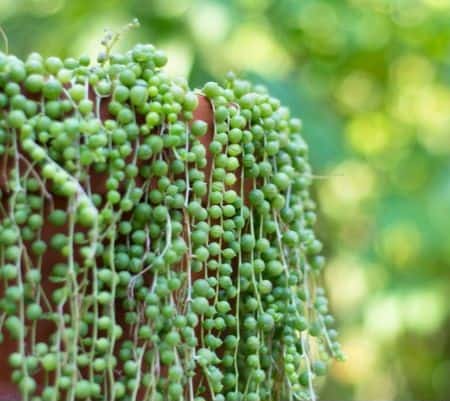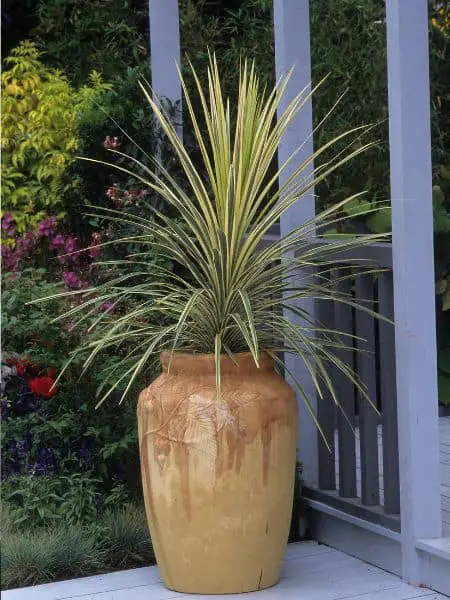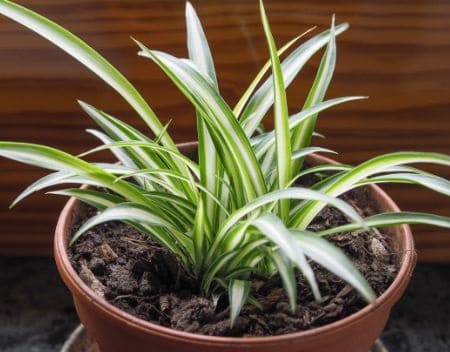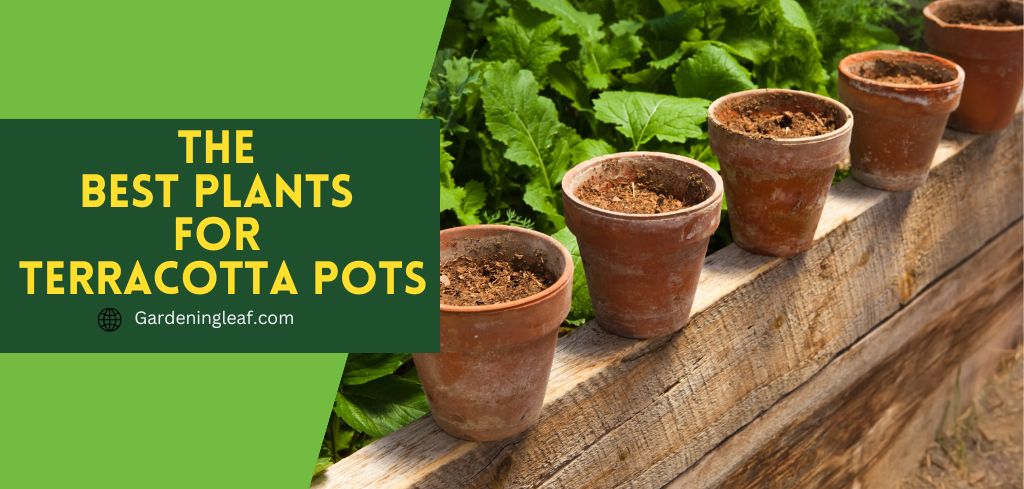Plants need moisture, sunlight, and oxygen to survive. But the complexity of nature lies in how the plants process this basic need of life. To maintain their moisture, for instance, plants require water. Sunlight produces energy and absorbs it and oxygen to survive. These requirements are met when plants’ soil is moistened, and oxygen-rich air reaches them from all sides.

We all know how hard it can be to keep up with plant care when busy. Thankfully, terracotta pots are here to help! Terracotta pots are designed to allow for extended watering periods without harming your plants. Giving you the perfect solution for busy schedules.
Terracotta pots are an excellent way to enhance your garden’s aesthetic. Not only its look great. But they also provide an excellent environment for various plants. Whether you’re looking for a colorful splash of color or a low-maintenance option. There are a variety of plants available that thrive in terracotta pots. In this post, we’ll provide tips for selecting and caring for the best plants for terracotta pots.
Read More :- The Ultimate Guide How to Clean Terracotta Pots: Tips and Tricks
Why Choose Terracotta Pots?
Terracotta means “baked earth” in Italian. It has been used for centuries to create clay pots. This type of pot is especially beneficial for plants that prefer a dry environment. the porous clay allows water to evaporate from the pot’s surface. It prevents the roots from becoming waterlogged.
Terra cotta is an excellent material for aiding humidity in your plants’ environment. Not only does it absorb and release moisture. But it also helps to create a humid atmosphere around your plants.
Let’s first analyze why terracotta pots are a great option for your plants. After that, we move on to the best plants for them.
Porous Material:- Terracotta is a porous material. That allows for excellent air circulation and drainage. For the health of your plant, this is crucial. Due to the fact that it keeps the roots from suffocating and becoming waterlogged.
Natural Look:-Terracotta pots have a natural and rustic look that complements any garden or patio. It is simple to find the ideal pot size for your plant.
Durability:- Terracotta pots are durable and can last many years if cared for properly. They are also relatively inexpensive. So it’s very affordable for any gardener.
Drainage:- Terracotta pots provide excellent drainage. Which is necessary for any plant to flourish. Additionally, they promote strong root development and stop water from gathering, which might result in root rot.
Best Plants for Terracotta Pots
Herbs
Herbs are a fantastic choice for terracotta pots for several reasons. Not only do they add flavor and fragrance to your meals, but they are also easy to grow and maintain.
Not only do terracotta pots look great in any garden. But also provide a perfect environment for growing herbs.
The porous texture of terracotta pots helps promote air circulation. It keeps the soil moist, which is perfect for growing herbs. Herbs grown in terracotta pots are also said to be more flavorful than those grown in other materials.
Terracotta pots are environmentally friendly and can be reused repeatedly. Basil, parsley, Thyme, Mint, and Rosemary do well in a terracotta pot.
Read More :- 15 Best Ways How To Stop Plant Pots Falling Over In Wind
Succulents

Succulents are another best plants for terracotta Pots. They are not only lovely additions to any garden, but they also need very little maintenance. They can endure dry conditions for long periods of time.
Succulent plants such as Aloe vera, Cacti, and Sukkulent plants thrive best in small pot sizes of around 3-6 inches wide by 6-12 inches long.
Frequent watering is important for the growth of succulents. And terracotta pots allow you to control the moisture levels in the soil.
Not only does the porous material help to prevent overwatering or underwatering. But the dry air in the pot ensures the succulent is getting the perfect amount of moisture for its needs.
Snake Plants

Snake Plants are a great choice for terracotta pots. Not only do they look stunning in their rustic containers, but they’re also known for their easy care and low maintenance requirements.
Terracotta pots are an excellent choice for snake plants. They are porous and breathable. It allows heat to escape and prevents the temperature from becoming too hot in extreme climates.
Their porous nature also helps to condition the pot. making it difficult to overwater the plant and allowing its roots to thrive. Unglazed terracotta pots allow water and oxygen exchange. It also improves soil aeration and helps to prevent the roots from staying wet for too long. This helps to keep the plant healthy and thriving in any climate.
Read More : How to Prune a Snake Plant – The Quick & Easy Way
Philodendron

Philodendrons are a popular choice for hanging terra cotta planters. These plants prefer dry soil before watering. So they do well in naturally baked clay planters, such as the ones made from Philodendron.
This plant loves indirect light and higher levels of humidity, so give it a warm, moist environment and you’ll have a happy, healthy plant.
They also need good drainage to thrive, making terra cotta pots an excellent choice. These pots draw water from the soil to help it dry more quickly, which is great for plants such as Philodendrons that prefer a drier soil.
Peperomia

Peperomia is a popular houseplant that can thrive in terracotta pots with little water and indirect light. It grows best in pots with drainage holes but enjoys slightly dry soil before watering.
The Peperomia obtusifolia, also known as the “Baby Rubber Plant.” It is a popular Peperomia species that thrives in terracotta pots. These plants require good drainage to survive and thrive.
Monstera deliciosa

Monstera plants are popular house plants. That can thrive in terra cotta pots with good drainage and indirect light.
These plants prefer moisture-retentive soil. But do well when it is slightly dry before watering. They will require watering once or twice weekly when grown in a pot. But do not need to be watered excessively to keep them healthy.
Read More :- Monstera deliciosa
String of pearls

The string of pearls is a popular houseplant due to its pea-shaped leaves. It can be planted in outdoor hanging baskets for the summer months. This plant can withstand forgetting to water it as each leaf’s middle is filled with water.
It displays pea-shaped leaves that make it look great in terracotta plant pots. In addition, a string of pearls is easy to care for. It requires only moderate watering and occasional fertilizer. The plant is ideal for terracotta pot gardening, requiring little maintenance and short rooting time.
Aloe Vera

Aloe vera is a popular indoor plant known for its various health benefits. It requires very little water and can survive in low-light conditions.
Terracotta pots can be an excellent choice for Aloe Vera plants. Because of its porous nature. It allows air and water to pass through the walls. Because of this, its helps to regulate moisture levels in the soil.
When planting Aloe Vera in a terracotta pot, use a well-draining soil mix. Aloe Vera needs bright, indirect sunlight and should be adequately watered. But only when the top inch of soil is dry to the touch.
Dracaena

Dracaena is a popular houseplant that can grow well in terracotta pots. This plant needs potting soil that good in drainage. When tiu selecting your pot, make sure the pot is the right size for your Dracaena.
Dracaenas prefer direct sunlight and warm temperatures. But they also do well with some indirect light. When watering Dracaenas, be sure to water thoroughly, allowing the water to penetrate the soil and drain out of the bottom of the pot. With the right environment and care, your Dracaena can flourish for years!
Spider Plants
Spider plants can be an interesting addition to a terracotta pot garden. Because they are succulents, spider plants require very little water. But do well with occasional watering.

Spider plants grow slowly and evenly in terracotta pots and will withstand the cold weather if overwintered inside a pot. When planting spider plants in a pot, choosing the right type of pot is important.
Spider plants do best in pots with drainage holes and plenty of air pockets. Make sure the soil is well-drained before adding water and fertilize as needed.
Many different succulents can be grown in terracotta pots. So it is important to find the right pot and soil mix for your plants. By watering properly and monitoring the moisture levels in the soil, you can ensure a happy garden full of succulents!
Coleus

This terracotta pot is the perfect home for a beautiful coleus. It’s popular because of its colorful foliage, which is also easy to maintain. The coleus is an ideal choice for terracotta pots and decorative planters.
This resilient and low-maintenance plant will surely add an eye-catching splash of color to your home or garden.
Its gorgeous and unique foliage will look stunning when placed in a terracotta pot. So, give your home or garden a vibrant makeover with this stunning coleus in a terracotta pot!
Pothos

The next plant on my list is a very easy-to-care plant and easily available. Pothos is the most popular house plant for me that doint need much care .
Pothos is a popular houseplant due to its ability to thrive in various conditions and ease of care. Plus, it looks great in any room of your home and can help to bring a touch of nature indoors.
Ensure the pot has drainage holes, as pothos plants need adequate drainage for their roots to remain healthy.
Read More :- Manjula Pothos Vs Marble Queen: Which One Is Best For You?
Geraniums

Geraniums in a terracotta pot are a classic combination that always stays in style. Not only do geraniums look beautiful in terracotta pots. but they are also easy to care for.
Geraniums can survive a wide range of temperatures and soil conditions. Making them an ideal choice for those who don’t have much time to devote to gardening. They require minimal care, with the occasional pruning and fertilizing. And, of course, don’t forget to water them regularly.
When planting geraniums in terracotta planters. It’s important to choose a large pot to accommodate the plant’s roots. The pot should also be well-draining, as geraniums don’t like to be waterlogged.
Zinnias

Zinnias are another easy-care plant that often looks great in terracotta pots. They come in various colors, so you can find the perfect pot to match your décor.
Zinnias thrive in moisture-rich soil and need little watering once they become established. To achieve the best results with zinnias, it is important to stake or cordon them off from other plants while they’re growing: this will help to keep them upright and prevent them from sprawling outwards.
When planting zinnias in a pot, make sure it has good drainage. Ideally, the pot should also have a hole in the bottom of the pot. So water can drain away easily.
Philodendrons

Philodendrons are often considered difficult plants to care for, but this is not true with terracotta pots. They thrive in well-draining soil and can be easily propagated from stem cuttings.
Like zinnias, philodendrons need very little watering once they become established in a pot. To achieve the best results, it is also helpful to stake or cordon them off from other plants while they’re growing: this will help prevent them from sprawling outwards.
When planting philodendrons in a pot, it is important to choose a well-draining pot. The plant should also have good drainage so excess water can flow away easily.
[amazon bestseller=”terracotta pots”]
FAQs
How do terracotta pots help protect plants from weather extremes?
Terracotta pots can be bought for protection against weather extremes like frost damage. Frost-resistant terracotta pots are made by drying and firing them to high temperatures, which reduces their porosity. This allows for better water drainage and insulation from cold temperatures. Additionally, terracotta pots come in a variety of sizes that can fit a variety of plants.
Are terra cotta pots good for all plants?
Terra cotta pots are great for plants because of their porous nature. This allows for efficient oxygen exchange and prevents root rot. Some plants may need frequent watering as the pot’s porous nature allows moisture to seep in and out more quickly.
Terra cotta pots can also help with heat stress in hot climates. They retain heat better than other pot materials. They could be better for plants that require consistently moist soil. as the porous nature of the pot causes excess moisture to build up.
How can the type of plant and water use impact plant health?

The type of plant and water used can impact. Hard water can leave a crusty buildup and stains on leaves, while soft water is gentler. To clean residue, mix warm water with a part of bleach or vinegar and wipe affected areas gently.
For stubborn buildup, soak in the solution before rinsing. Choose pots with the appropriate diameter and empty saucers to prevent water damage.
Gardeners should be careful when using tap water on their plants. It can contain chlorine and minerals that encourage mold growth. Mixing warm water with vinegar or bleach in parts can help clean and prevent mold. Alternatively, consider using filtered water or rainwater from a garden center for better plant health.
Conclusion
While terracotta pots have many benefits, their porous nature and rustic appearance also have some cons. One major drawback is that they can break, especially in colder temperatures or if dropped. Its more expensive than other types of pots. Such as plastic pots or ceramic pots. Terracotta pots also need frequent watering. Since they absorb water and dry out faster than other materials
Terracotta pots are an excellent option for growing plants as they are highly porous and allow for moisture to be retained, heat to be conducted, and root rot to be inhibited.
The Best Plants for Terracotta Pots include succulents, herbs, cacti, and small flowers. These plants can thrive in the natural environment that terracotta pots provide and contribute to the overall beauty of any garden.


